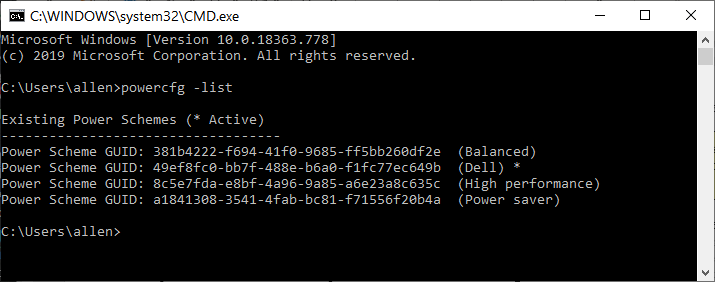As you may know, your computer can run under a variety of different power schemes. A power scheme is a collection of hardware and system settings that manage how your computer uses power. They are typically used the most with laptops, where it's more crucial to tradeoff between performance and battery preservation. Even a desktop machine can use them, though. There are three schemes that come with Windows by default. They are Balanced, High Performance, and Power Saver, and you can create others if none of these suits you.
There is a command utility in Windows called Powercfg, which provides a great deal of control over your power schemes. (You can use the GUI for much of this functionality, too, but a lot of people prefer using the command line.) Powercfg takes numerous switches to tell it what you want to do regarding your power schemes. To see all of the switches available to Powercfg, invoke it with the "-HELP" (or "-?") switch.
For this tip we want to change a value in the current power scheme. First, we'll get a list of the available power schemes (covered under another tip). (See Figure 1.)

Figure 1. Powercfg -list.
The way to change a value is to use the "-CHANGE" (or "-X") switch. The format of the command is
Powercfg -change <setting> <value>
Where <value> is a number of minutes, and <setting> is one of the following:
-monitor-timeout-ac -monitor-timeout-dc -disk-timeout-ac -disk-timeout-dc -standby-timeout-ac -standby-timeout-dc -hibernate-timeout-ac -hibernate-timeout-dcSo, for example, if you wanted to set the monitor idle timeout value to 5 minutes when on AC power, the command would be:
Powercfg -change -monitor-timeout-ac 5
![]()
![]()
![]() This tip (13477) applies to Windows 7, 8, and 10.
This tip (13477) applies to Windows 7, 8, and 10.
Bluetooth speakers allow you to play your computer's audio wirelessly. Connecting a Bluetooth speaker to a ...
Discover MoreThe Powercfg utility allows you to control how power is used on your system. This tip shows you how to use the ...
Discover MoreWindows allows you to create custom power management plans. When you no longer need a plan you previously defined, you ...
Discover MoreThere are currently no comments for this tip. (Be the first to leave your comment—just use the simple form above!)
Copyright © 2025 Sharon Parq Associates, Inc.
Comments